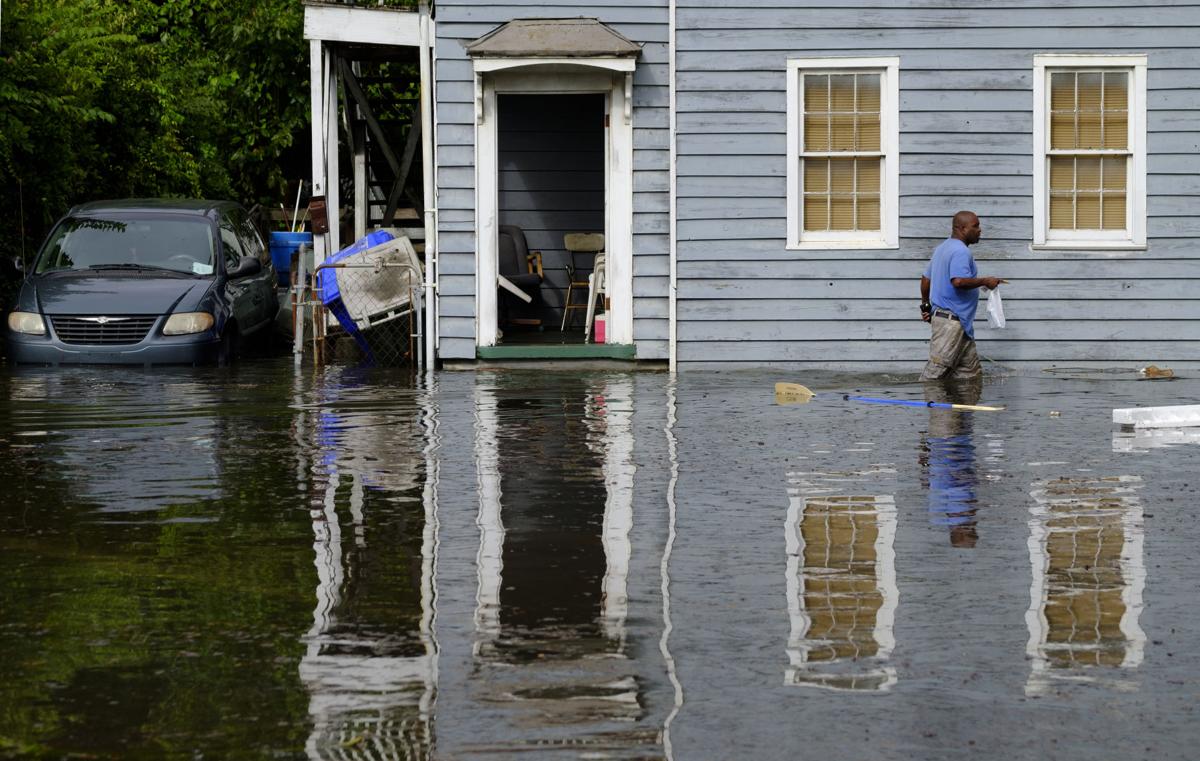Flood insurer that covers 200K SC homes remains a political football

Football season is still a few weeks away, but the punting unit already has taken the field in Washington.
With just hours left on the clock, the Senate approved by a vote of 86-12 on Tuesday another extension of the cash-strapped National Flood Insurance Program, kicking that weary can down the road again. The House previously passed the bill, also by an overwhelming margin. President Donald Trump signed it into law just as time was running out.
Sen. John Kennedy, a Republican from flood-prone Louisiana, told the Associated Press that it would have been “bone-deep, down-to-the-marrow stupid” to let the program expire now.
The move ensures homeowners in Kennedy’s state, South Carolina and the rest of country will be able to purchase the government-subsidized protection for at least another four months, through the end of the 2018 Atlantic hurricane season.
It’s the seventh time lawmakers in Congress have given the program a temporary lifeline since the last long-term authorization expired in 2017.
“You probably noticed they kicked it past the midterm elections,” said Robert Hartwig, a former Insurance Information Institute president and chief economist who’s now a finance professor at the University of South Carolina Darla Moore School of Business in Columbia.
The flood program is what Hartwig, who also is director of USC’s Risk and Uncertainty Management Center, termed a “political hot potato.”
The key reason is that it’s literally underwater, weighed down by $20 billion owed to the U.S. Treasury for past payouts. Last year, Congress engineered a $16 billion bailout to ensure the program could keep paying claims brought on by Hurricane Harvey without hitting its $30 billion debt limit.
All the while, according to Hartwig, “serious proposals” to overhaul the federal underwriter have gone nowhere, partly because of the political lines it has created within the majority Republican Party.
“It’s divided by … staunch fiscal conservatives vs. those who believe the program should be largely maintained for the benefit of their constituents, who they believe may not be able to afford flood coverage under a program that’s been reformed,” he said last week. “This goes to show that all politics are local.”
The flood program, which is under the Federal Emergency Management Agency, turns 50 this year. It was created in 1968 to provide affordable insurance coverage that private carriers couldn’t or wouldn’t underwrite policies in coastal and flood-prone inland areas. Claims are capped at $350,000.
As of last year, the program covered about 200,000 homes and other properties across the Palmetto State with a combined estimated value of $51.5 billion, according to the latest federal figures. Nationwide, about 5 million policies are in force.
The problem is that the trickle of premiums flowing in from policyholders isn’t near enough to make up for the gusher of money rushing out.
“Each year that goes by, the vulnerability increases and the exposure to taxpayers rises,” Hartwig said.
Damage claims from across the country approached $9 billion in 2017, not counting those that haven’t been filed yet.
And, lawmakers have been unable to come to terms on a bipartisan or even partisan plan to fix the financially strained system.
“In an era when people are increasingly concerned about things such as rising sea levels, climate change and more severe storm surges, which is a form of flooding, it’s almost mind-boggling that major reforms have eluded the system,” Hartwig said.
In South Carolina, an effort is underway at the state level to develop a private market for flood coverage, S.C. Department of Insurance chief Ray Farmer said last week.
“It’s still in its early stages,” Farmer told Gov. Henry McMaster at a Cabinet meeting Wednesday. “It’s true that our development on the coast is getting closer to the water, and we’re not moving. Obviously, the tide’s rising.”
Farmer stressed that inland residents also need to look at buying a flood protection, noting that most of the water damage from the epic rain storms of 2015 was concentrated in the Midlands
“Our entire state is in the flood zone, in my opinion,” Farmer said.
While individual states can do their part to ease the crisis, the federal government has been and will likely remain the primary backstop.
But the outlook for long-term fixes is bleak, at least in the short run.
“History does not provide the public with very much encouragement with regard to actually getting some reforms done,” said Sen. Roger Wicker, R-Miss.
For now, the federal flood program clings to life until at least Nov. 30, right in the heart of football season. Odds are, the punting unit will be ready to go.
Seanna Adcox of The Post and Courier contributed. Contact John McDermott at 843-937-5572 or follow him on Twitter at @byjohnmcdermott
